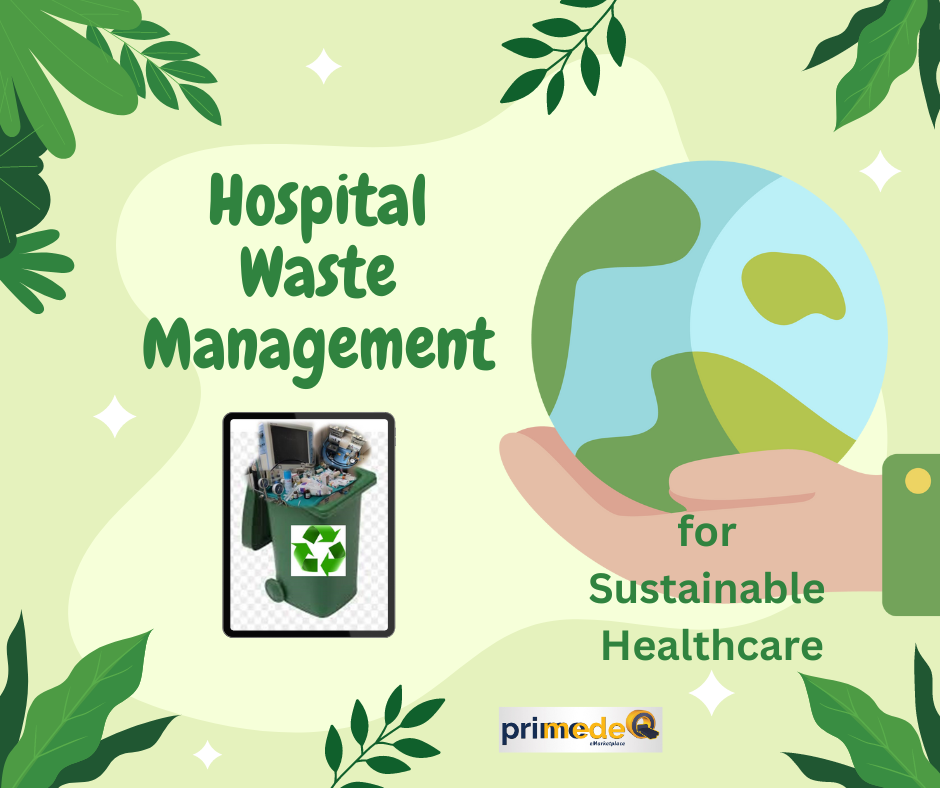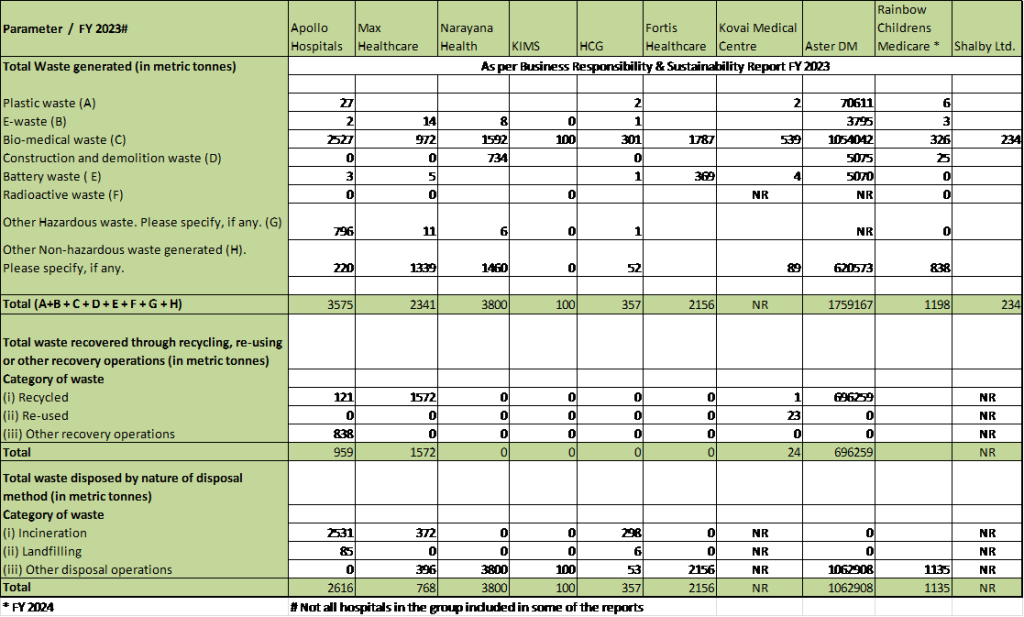
The approach to waste management in Indian Hospitals so far was governed largely by NABH or JCIA certification requirements and/or regulatory compliance requirements such as AERB for radioactive medical equipment or local pollution control board requirements for biomedical waste and all other types of waste disposal.
The key concern in hospital waste management, predominantly, seemed to be – safe infection control and safe disposal of hazardous and other wastes. This is not enough anymore. The concern world-over has been moving towards Sustainability, Climate change, Circular economy and overall ESG compliance.
SEBI’s introduction of BRSR (Business Responsibility & Sustainability Report) is an indication of India’s commitment to achieving Sustainable Development Goals. For the healthcare industry, it means to provide Sustainable Healthcare.
Current Hospital Waste Management Practices in India
Let’s take a quick look at what BRSR disclosures entail and where the leading hospitals in India today are, in terms of hospital waste management for sustainable healthcare.


From the widely varying figures reported by these hospital groups, the following becomes clear:
- There is lack of clarity about categorisation of waste. Some plastic waste and some of the non-hazardous waste may have been categorised as ‘bio-medical waste’ by some of the hospitals.
- Most hospitals have not been measuring different categories of waste being disposed. This is probably due to the fact that they simply hand-over all the waste to Government authorised agency for disposal. So far, all they cared about is handling and segregation of waste as per guidelines. As a result, many have aggregated almost all the waste into ‘Bio-medical waste’ category.
- However, from the data reported by some hospitals, it is evident that significant part of the waste could have been in the category of ‘other non-hazardous’ waste. Other non-hazardous waste generated typically include – Metal, wood, paper / cardboard, textile waste, kitchen waste, garden waste, glass waste, thermocol, rubber, etc., that may potentially be bio-degradable, recycled or composted.
- According to WHO, of the total amount of waste generated by health-care activities, about 85% is general, non-hazardous waste. The remaining 15% is considered hazardous material that may be infectious, toxic or radioactive.
- By mixing up different categorize of general waste, hospitals may be losing the opportunity to reuse/ recycle/ handle large amount of waste sustainably.
- Very few entities have currently reported efforts towards recycling/ reusing or recovering in any manner from waste as observed from the above report on hospital waste management.
- Very few have reported incineration as a disposal method, most simply hand-over the entire waste to government authorised agencies for disposal. Read more on what happens to the waste after disposal – here. There is a need to make more concerted efforts at source to minimise waste going to landfill.
Waste Management for Sustainable Healthcare – What is expected?
From the BRSR template one can observe the following as the aim of the Government:
- Waste needs to be segregated and measured by different categories so that each can be handled appropriately.
- Increase Recycling/ reuse/ recovery.
- Maximise waste treatment and minimise landfill or release to environment as much as possible.
- Reduce total quantity of waste generation – From FY2024 the companies are expected to report on Waste per Rupee of Turnover (including adjusted for purchase power parity) and any other industry relevant metric such as – Waste/per bed). Clearly, this is to set standards for improving waste generation efficiencies.
As per the latest SDG report for 2024 released by the United Nations in Jun 2024, only 17% of the Sustainable Development Goals are on track for 2030. Other goals are lagging behind, stagnating or regressing. ‘Reduction in waste generation’ is one of the Goals that are ‘stagnating’.
BRSR is currently all about disclosure. Soon we will be moving towards developing industry standards, followed by achieving sustainable results across the board.
Conclusion
Large hospitals (and groups) in India which are compliant with NABH/ JCIA accreditation as well as regulatory requirements are following stringent WHO guidelines for waste segregation and disposal. However, more that 90% of the hospitals are small and medium hospitals / Nursing Homes. Even if assuming these hospitals dispose-off their biomedical waste to authorised agencies, how compliant are they in terms of e-waste or radioactive medical equipment or other hazardous waste disposal?
By not being mindful and mixing up different categories of general waste, are we not losing the opportunity to reuse/ recycle/ handle large amount of waste sustainably?
As the world is moving towards sustainable practices, hospital waste management practices need to change significantly. There is a need to use more bio-degradable material, reduce waste generation in hospitals and recycle / reuse more effectively.
PrimedeQ is an e-Marketplace for buying, selling, renting, servicing and spares of medical equipment. We offer all types of used / refurbished medical equipment , including cathlab, ECG machine and other diagnostic equipment, endoscopes, OT equipment, Laparoscopic Equipment, Lab equipment, X-Ray, TMT, anesthesia machine, ultrasound machines etc including physiotherapy and rehabilitation equipment (New & Used). We offer repair services for all types of medical equipment.
Contact us for any medical equipment requirements on 7019759765.
https://in.linkedin.com/in/shanthi-mathur-ab07838
